What Is an Array Junction Box in Solar PV Modules? | Complete Guide
What Is an Array Junction Box in Solar PV Modules? | Complete Guide
An Array Junction Box in solar, AJB, is used to connect the photovoltaic strings in parallel. The combined DC power is fed to the photovoltaic inverter. It includes photovoltaic string protection, overvoltage protection and a DC output switch isolator. The AJB can be customized for different configurations, based on the number of strings of solar panel modules used in the layout. AJB have the following component
- Enclosure
- PV fuses
- Surge Protection Device
- DC Disconnector/Isolator
- Cable Glands/Connectors
1. Enclosure:
The combiner box enclosures are usually made of thermoset (eg. GRP or polyester), or thermoplastic (polycarbonate) material, and come with IP65 protection. Enclosures come in various sizes, based on the number of input strings. The protection features required also contribute to the changes in the enclosure needed. Enclosure should be fire-resistant with self-extinguishing property. It should be UV-resistant and halogen–free and should also have a good mechanical impact resistance, preferably greater than IK 08.
2. PV fuse:
PV fuse or photovoltaic fuse, of the range 1A to 32A are easily available in market. The PV fuses are used for overcurrent protection.
PV fuse selection:-
Nsr = No. of PV modules in series per PV string
Npl = No. of PV strings in parallel per PV sub-array
Isc = Short-circuit current of one module at Standard Test Conditions (STC)
Voc = Open circuit voltage of one PV module at STC
Calculations to verify volts and amps:
• Fuse voltage rating ≥ 1.20 x Voc x Nsr
• Fuse amp rating ≥ 1.56 x Isc
For Example:-
Let’s assume that
No. of PV module in strings are: – 20 nos. (Nsr )
No. of PV string in parallel per PV sub array = 16 (Npl)
Isc = 8.6 Amp
Voc=37.2 V
Fuse amp rating ≥1.56*8.6 A ≥13.41 A
As per the standard fuse available in market, a 15A fuse should be used here.
Voltage rating of Fuse ≥1.2*37.2*20 V ≥ 892.8 V
As per the standard fuse available in market, a 1000 V DC fuse should be used to meet this requirement.
3. Surge Protection Device:
SPD or Surge Protection Device is used in the AJB/SCB. It protects electrical and electronic equipment from the power surges and voltage spikes. SPD diverts the excess voltage and current from transient or surge into ground through earthing system.
Selection Of SPDs according to the voltage protection level Vp:
Every SPD has a maximum voltage protection level specified for operation & diverts the excess energy in ground. The protection voltage level of SPD is usually kept at 20% less than dielectric strength & greater than operating voltage of PV system.
4. DC Disconnector /Isolator:
DC Disconnector/Isolator is a switch used to disconnect the power supply between PV string & inverter. It is recommended to be placed before the inverter, to disconnect the DC side of the system when required.
Selection criteria for PV isolator
Initial conditions for specifying PV disconnectors:
Nsr = No. of PV module in series per PV string
Npl= No. of PV string in parallel per PV sub-array
Isc = Short-circuit current of one PV module at Standard Test Conditions
Voc = Open circuit voltage of one PV module at STC
• Circuit breaker voltage rating ≥ 1.20 x Voc x Nsr Volt
• PV Output current rating ≥ 1.56 x Isc x Npl Amp
For example:- Let’s we assume that
No. of PV module in strings are = 20 nos. ( Nsr )
No. of PV string in parallel per PV sub array = 16 ( Npl)
Isc = 8.6 Amp
Voc=37.2 V
Circuit breaker voltage ≥ 1.20*37.2*20 Volt ≥892.8 Volt
As per standard available circuit breakers in market, it should be 1000 V DC Disconnector.
Current rating of isolator ≥1.56 x Isc x Npl Amp ≥1.56*8.6*16 Amp ≥214.65 Amp
As per standard available circuit breakers in market, it should be 225 Amp isolator.
5. Cable Glands/Connectors:
Every solar system is outdoor type, so AJB component should be IP65 protected & UV protected. There are two options with cable entry in AJB.
1. Cable Gland
2. MC4 connector.
Cable glands require the sealing arrangement after the connection inside AJB to outside systems is done. MC4 Connectors have the male female socket for connection, and hence do not require sealing to maintain the IP protection. MC4 connectors have the limitation of current capacity. In low rating, 30 A for string level MC4 is the best option. In case of AJB, output rating of more than 30Amp cable gland is suitable.
Suggested Articles
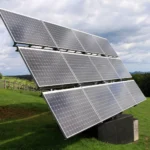
New IREDA Loan Scheme for Solar Rooftop Projects: Benefits, Eligibility & Interest Rates
India’s renewable energy push gets a major boost with the new IREDA loan scheme for solar rooftop projects. This scheme offers low-interest financing, simplified approvals, and better support for residential, commercial, and industrial consumers. Here’s a detailed look at its benefits, eligibility, interest rates, and how to apply for funding.

Why Solar Energy Makes Sense for the Healthcare Industry
Explore how the healthcare industry can leverage solar energy to reduce electricity bills, enhance reliability, and support green initiatives.

Everything You Need to Know About Solar System Earthing
Power factor after solar installation often fluctuates due to system design and load patterns. Learn the key causes, challenges, and solutions for better efficiency.
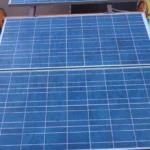
Choosing the Right Solar Panel: Complete Guide for India
Solar is among the fastest-growing industries in India. This is mainly because solar energy is not only renewable but is also attractive from a financial point of view.
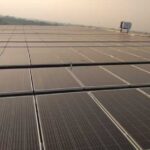
UP Electricity Tariff Increase 2015-16: Rates Rise by Rs 0.40–1.00 per Unit – What Consumers need to know
Uttar Pradesh has increased electricity tariffs for 2015-16, ranging from Rs 0.40 to 1.00 per unit. This update explains the revised rates, the sectors affected, and what consumers need to know about the tariff hike.

Solar String Sizing Check: Did Your Installer Get It Right?
Worried your rooftop solar strings might be sized incorrectly? Check these tips to ensure your Solar PV system is installed for maximum efficiency and safety
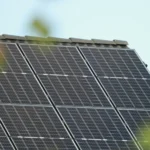
How the RESCO Model Works in Solar: A Complete Guide for Industries
The RESCO model allows businesses to adopt solar with zero upfront investment. Under this model, a developer installs, owns, and operates the solar plant while you simply pay for the power you consume—making clean energy both affordable and hassle-free.
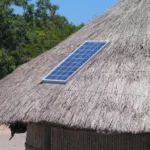
Solar Energy Myths vs. Facts: What You Should Know
Solar power myths often mislead homeowners. Learn the facts about cost, efficiency, and reliability of solar energy.